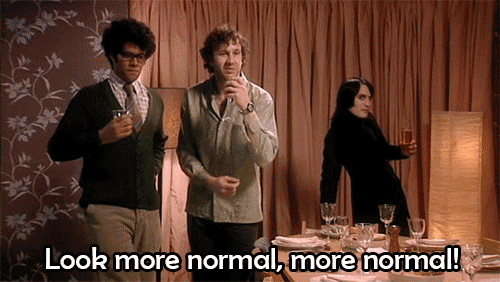When I was a psychology student, I’d often joke about getting a doctorate purely to publish my magnum opus Lovemology—the world’s worst self-help book. I’d be competing with The Secret (the art of scrunching up your face and wishing really, really hard), but I was confident I could pull it off.
Although suitably bland and vapid, Lovemology was only a working title. For example, what if I were to riff off the popular career guidebook What Colour is Your Parachute? with the likes of What Colour is Your Lovechute? (And if that sounds wrong, then I don’t wanna be right!)
Whatever I was to call it, Lovemology would be full of woeful relationship advice from first to last page. The blurb too. Despite its unsophisticated and sophistic content, not to mention, the lack of any supporting empirical evidence, the cover would display “PhD” after my name in big, glossy, authoritative letters.
But this was all a while ago; I’ve since decided I don’t fancy academia. Moreover, the self-help genre has moved on. While gurus used to borrow credibility from the three little letters after their name, nowadays, one needs the backing of an exotic-sounding foreign word.
Any foreign word, whatsoever. Wabi-sabi, Friluftsliv, Sisu, Ubuntu, Gigil, Kintsugi, Fika—gesundheit!
Move over Ikigai (the Japanese method of finding your purpose), Hygge (the Danish secret to happiness), and Lagom (the Swedes’ way of living a balanced life) because there’s a new gimmick in town. I propose that the next self-help sensation to hit the shelves (and saturation point) should be centred on—drum roll—sprezzatura.
That is, the art of studied carelessness. The way of artful artlessness.

It has a nice ring to it, don’t you think? A “dz” sandwiched by two rolling “r”s lends it a certain panache. It’s primarily an art term: think paintings with ladies in loose-limbed repose, their hair in artful disarray, and robes falling aside to bare a single breast. (Or as you like to call it, Dear Reader, greeting the dishwasher repairman.)
The Italians have given us—Wikipedia tells me—amongst other things: the ‘first proper internal combustion engine,’ the arch, the mechanical pencil, the Botanical Garden, the moon boot, the nuclear reactor, perspective, the pistol, the radio, the science academy, public toilets* and, of course, the art of affected nonchalance.
Sprezzatura—as likely to be the key to happiness as any other supposedly untranslatable foreign word.
How does one incorporate the ways of sprezzatura into everyday life? Before sprezzatura can manifest in your mindset—let it find a home in your body. First, let’s practice your rolling shrug. Let the weight of everyday worries roll off your shoulders like water off a duck’s back. Perfect.
Now, lean against a wall, cross your legs at the ankles, and dig your hands into the pockets of your ‘just thrown together’ perfectly balanced outfit. Alternatively, drape yourself dramatically over a chaise longue. However you choose to strike a pose, be sure to undo the first few buttons of your shirt and rake a hand through your hair while you’re at it. But remember, sprezzatura is a way of life, not just a fashion choice.
Let sprezzatura into your home. Forget all notions of decluttering a la Marie Kondo** or embracing Scandinavian minimalism, instead spend hours tweaking knickknacks on your mantel to sit at perfectly irreverent, jaunty angles. Dedicate each and every morning to arranging the throw pillows on your bed using a steel square and the principles of the golden ratio (yet another thing we owe to the Italians).
The last step: sprezzatura of the spirit—only, is there such a thing? Studied carelessness is an oxymoron. Careless but not carefree. A living paradox of conscious unconcern and effortful effortlessness.
Adopt a languorous slow blink as you watch Rome burn, all the while screaming on the inside because you think you might have left the iron on. (Not that you’d even go to the trouble of getting the wrinkles out of your chinos; imperfection is so very ‘in’.)
In short, feel free to remain your neurotic, chaotic self underneath your carefully cultivated veneer of easy, breezy nonchalance.
Perhaps I’ll call this book The Art of Not Giving a Stuff. (Let’s hope I don’t get sued.)
Footnotes
*Prior to that people “simply relieved themselves wherever they stood, and vanished the evidence”.
*Did anyone else try Kondo’s ‘spark joy’ method and then have to fish all of their very necessary (if not heart-palpitatingly joyful) socks out of the bin?
Buy me a coffee if you’d like to support Knowledge is Power, France is Bacon.




